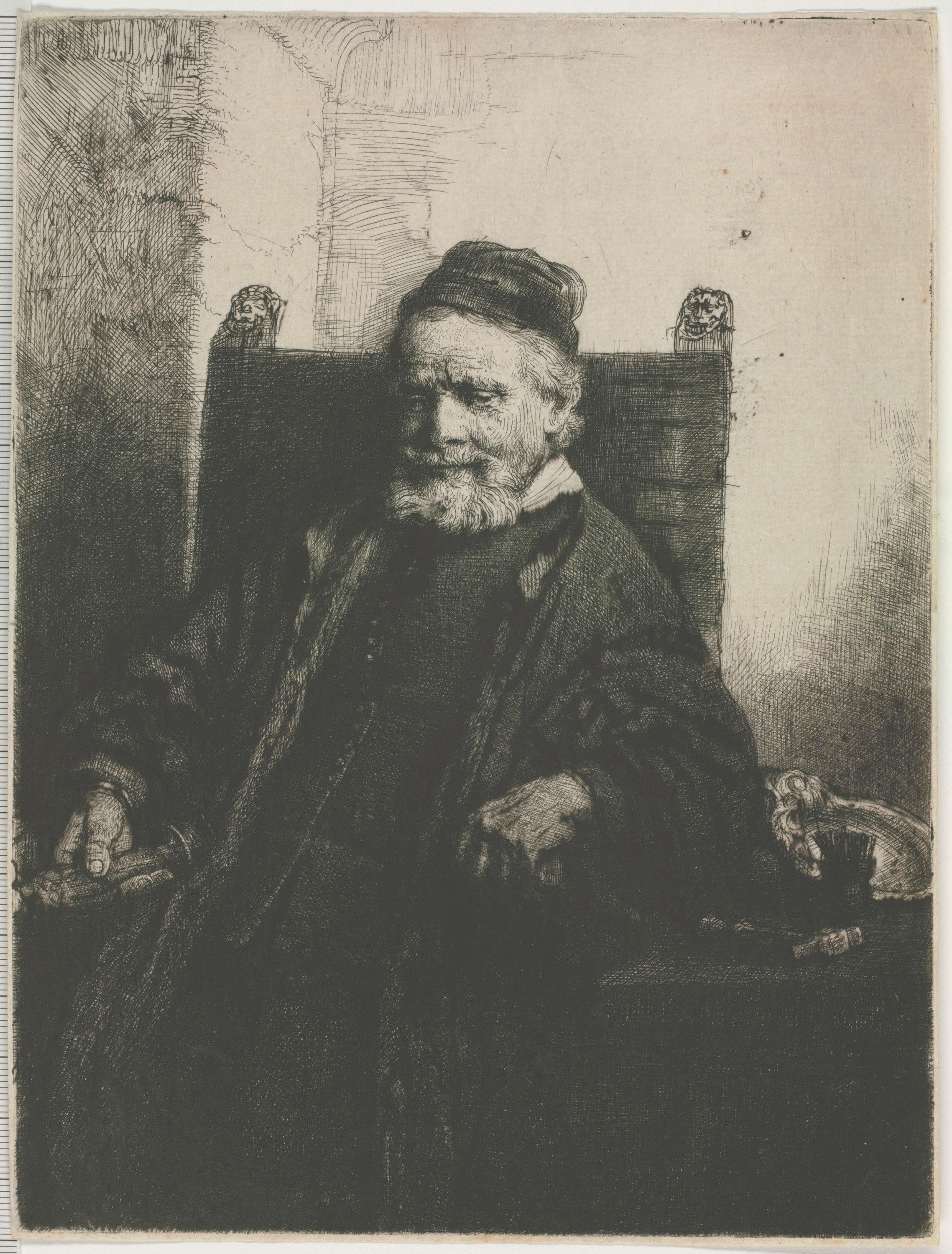Jan Lutma, goldsmith
Rembrandt Harmenszoon van Rijn (Dutch, Leiden 1606–1669 Amsterdam)
Careful observer of life and with a deeply religious spirit, Rembrandt expresses his own idea of existence - both realistic and metaphysical - above all in his biblical prints and portraits, depicting a world that under the most concrete of appearances, conceals a supernatural reality. This print resumes the artist’s enthusiastic dialogue of light and shadow that is also a central theme of his painting. This time he develops it using a different technique, achieving extraordinary luministic effects, from the deep velvety black of the hat and clothing of his subject, to the absolute glow of the light filtering from the top of the room. The famous goldsmith, Jan Lutma (ca. 1584-1669), a personal friend of the artist, is shown here surrounded by the tools of his trade, a hammer and metal punches, and with two of his creations, a candlestick and a decorated bowl. Rembrandt was a master in the depiction of space using light, and here the space around the large armchair is effectively depicted by leaving just a fine, white strip that separates the chair from the background wall. To model the shapes, Rembrandt uses denser hatching in different directions, reinforcing the contrast with drypoint, as can clearly be seen in the folds of the subject’s robe.
